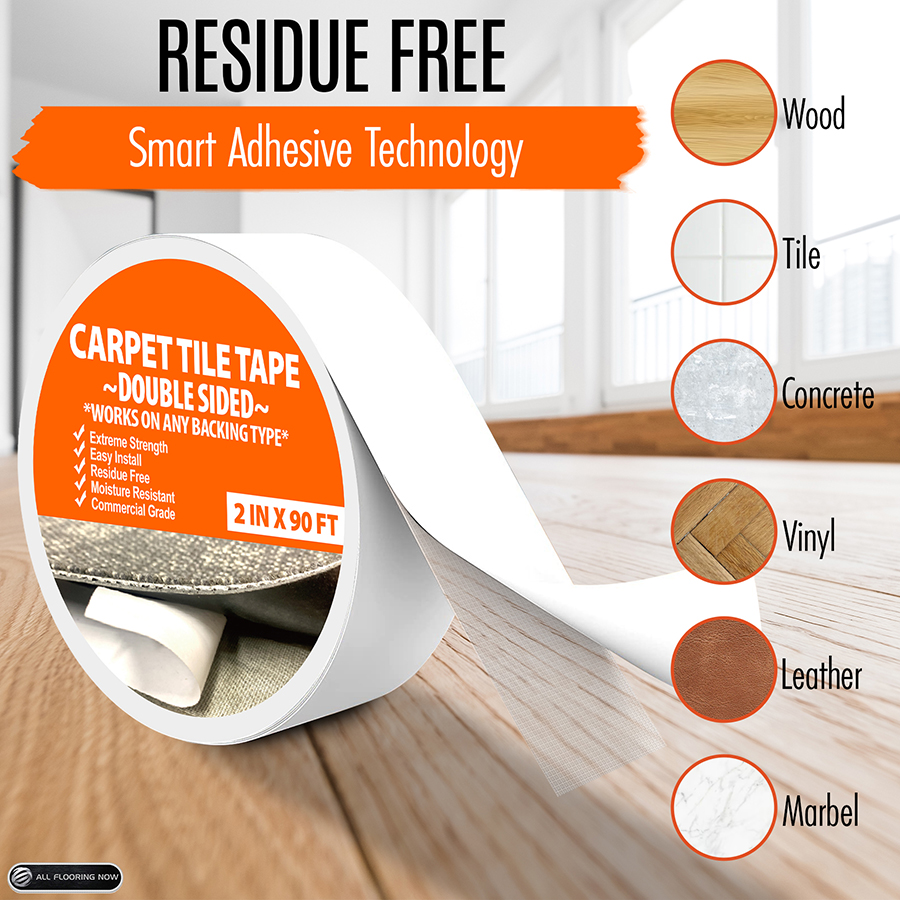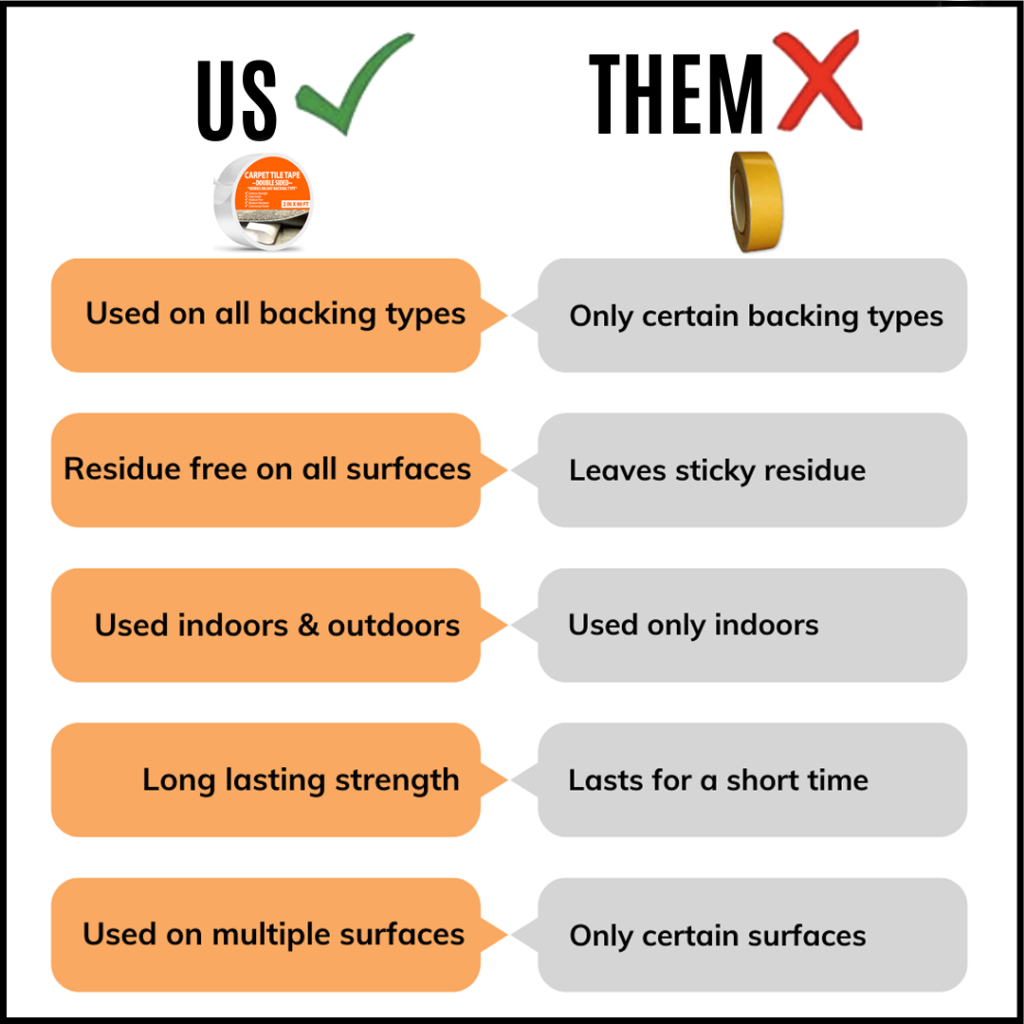Can You Put Carpet Tiles Directly on Concrete?
Why Carpet Tiles Are a Great Choice for Concrete Floors
Carpet tiles have become an increasingly popular flooring option due to their ease of installation, modularity, and versatility. Whether you’re outfitting a basement, office, or commercial space, carpet tiles offer several benefits when installed over a concrete subfloor:
1. Easy Installation
One of the most significant advantages of carpet tiles is their ease of installation. Unlike traditional broadloom carpet that requires stretching, cutting, and professional installation, carpet tiles can be laid in a modular fashion, which is a DIY-friendly process. You can install carpet tiles directly on a concrete surface without the need for complex tools or materials, provided that the surface is properly prepared.
2. Modular and Replaceable
Carpet tiles are modular, meaning they come in small, square pieces that fit together to create a larger carpeted surface. If one tile becomes damaged or stained, you can easily replace that individual tile rather than replacing the entire floor. This feature is particularly useful in high-traffic areas where wear and tear are more likely.
3. Moisture Resistance
Many modern carpet tiles are designed with moisture-resistant backings, making them suitable for installation in basements or other areas where moisture might be a concern. This is especially important when laying tiles directly on a concrete floor, which can be susceptible to moisture issues.
4. Sound Absorption
Concrete floors can create echo and amplify noise in a room. Carpet tiles help absorb sound, making the space quieter and more comfortable. This makes them an excellent choice for commercial offices, conference rooms, and even home theaters where sound control is important.
5. Insulation and Comfort
Concrete can be cold, especially in winter. Carpet tiles provide a layer of insulation and comfort underfoot, making concrete floors feel warmer and more inviting. For residential basements or office spaces, this added comfort can make a significant difference in the overall feel of the space.
Challenges of Installing Carpet Tiles Directly on Concrete
While installing carpet tiles on concrete has many advantages, there are also some challenges to consider. Concrete is porous, susceptible to moisture, and can sometimes be uneven, which can affect the longevity and performance of your carpet tiles if not properly addressed.
1. Moisture Issues
Concrete is a porous material that can absorb and release moisture. If the concrete is not adequately sealed or if you are installing carpet tiles in a basement or other damp area, moisture can seep through the concrete and damage the carpet tiles. Excess moisture can lead to mold and mildew growth, cause adhesive failure, or warp the carpet tiles.
2. Temperature Fluctuations
Concrete can expand and contract with changes in temperature, particularly in areas like basements or garages where the floor may experience extreme cold in the winter and heat in the summer. These temperature fluctuations can cause adhesive issues or lead to tile displacement over time if the installation isn't done correctly.
3. Uneven Surface
Concrete subfloors are often uneven, with cracks, dips, or bumps that can interfere with the installation of carpet tiles. If the surface isn’t level, the carpet tiles may not adhere properly or lie flat, which can result in uneven flooring, gaps between tiles, or premature wear and tear.
4. Adhesion Problems
Adhesive-backed carpet tiles, or tiles installed using carpet tile adhesive, need a clean, smooth surface for proper bonding. If the concrete floor is dirty, dusty, or covered in debris, the adhesive may not stick well, causing the tiles to loosen or shift over time.
Preparing a Concrete Subfloor for Carpet Tile Installation
To ensure that your carpet tiles adhere properly and provide a long-lasting, comfortable surface, you need to properly prepare the concrete subfloor before installation. Here are the key steps to follow:
1. Test for Moisture
Before installing carpet tiles, it’s crucial to check for moisture in the concrete. You can use a moisture meter to measure the humidity levels in the concrete or tape a square piece of plastic to the floor for 24 to 48 hours to see if condensation forms underneath. If moisture is present, you may need to apply a moisture barrier or sealant before installing the tiles.
2. Clean the Surface
The concrete surface must be completely clean and free of dust, dirt, grease, or debris before you install carpet tiles. Any particles left on the floor can interfere with the adhesive, causing tiles to come loose or not stick properly. You can use a vacuum or mop to clean the floor and remove any fine dust particles.
3. Level the Concrete
If the concrete floor is uneven, you’ll need to level it before installing carpet tiles. Small cracks or dips can be filled with a concrete leveling compound. For larger issues, consider grinding down bumps or using a self-leveling compound to create a smooth, even surface. A flat surface is essential for the carpet tiles to adhere properly and prevent gaps between tiles.
4. Apply a Primer or Sealant
In cases where moisture is a concern or if the concrete is particularly porous, applying a primer or concrete sealant can help. A primer will help the adhesive bond better to the concrete, while a sealant can provide protection against moisture. Ensure that the primer or sealant is fully dry before beginning the installation process.
How to Install Carpet Tiles on Concrete
Once the concrete subfloor is properly prepared, you can begin the installation process using carpet tile tape. Here’s a step-by-step guide to installing carpet tiles on concrete:
1. Plan Your Layout
Before applying adhesive, it’s a good idea to lay out the carpet tiles in the desired pattern to ensure proper alignment and fit. You can start by placing the tiles in the center of the room and working your way outwards, cutting tiles as necessary to fit the edges of the room.
2. Apply Adhesive
Depending on the type of carpet tiles you are using, you can use carpet tile tape or you may need to apply a pressure-sensitive adhesive to the concrete subfloor. Follow the manufacturer’s instructions for the adhesive, ensuring it is spread evenly and given time to become tacky before laying down the tiles. If you’re using peel-and-stick carpet tiles, no additional adhesive is necessary—simply peel off the backing and press the tiles into place.
3. Lay the Carpet Tiles
Begin by placing the first tile in the center of the room, then work outward in rows. Press each tile firmly into the adhesive or onto the floor, ensuring that the edges align properly with neighboring tiles. Use a roller or your hands to press down the tiles and ensure good adhesion to the concrete.
4. Cut Tiles for Edges
When you reach the edges of the room, you’ll likely need to cut some tiles to fit. Use a utility knife and straightedge to make clean cuts, ensuring the tiles fit snugly against walls or around obstacles.
5. Finish and Inspect
Once all the tiles are in place, use a roller to press down the entire surface of the carpet tiles, ensuring that they are securely adhered to the concrete. Inspect the tiles for any gaps, loose edges, or misalignments, and make any necessary adjustments.
Conclusion
Carpet tiles can be installed directly on concrete, but success depends on properly preparing the concrete subfloor and addressing potential moisture or adhesion issues. By cleaning, leveling, and sealing the concrete, you can ensure that your carpet tiles adhere properly and provide a durable, comfortable surface for years to come. Whether you’re outfitting a commercial office, basement, or garage, carpet tiles offer a versatile and cost-effective flooring solution for concrete floors.





